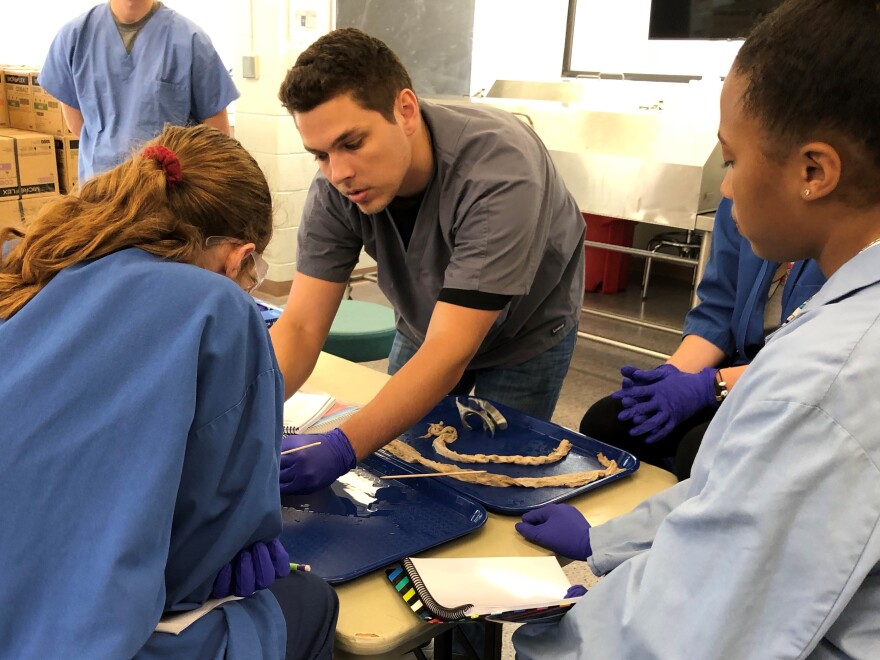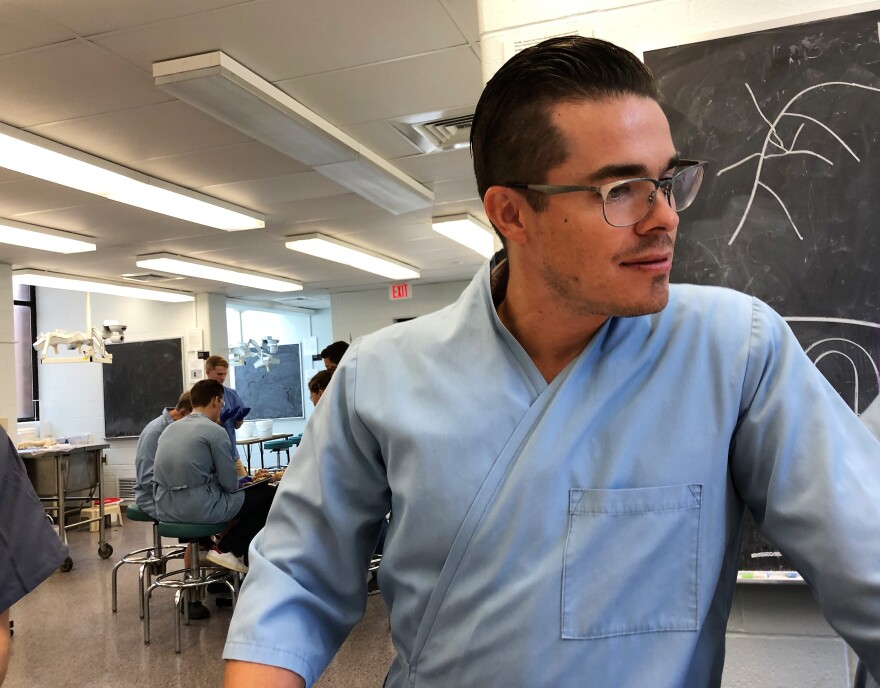There’s a summer program in Northeast Ohio that offers hands-on experience with the cadavers used by medical students.
The Northeast Ohio Medical University in Rootstown is opening up its anatomy labs to community members who want to learn more about the human body.
The pace of the program is blistering.
A human brain, beige and lumpy, sits on a bright blue tray as second-year medical student Trey Moberly dives into its structures.
“At the bottom of the midbrain we have the medulla oblongata, and we’re going to work up. Here’s our pons, and at the top we have our true midbrain," he tells the students in the two-week intensive course, which provides the same material Moberly learned in his first year at NEOMED.

Moberly is one of six medical student instructors in the lab.
April Enger, another instructor, probes the chest cavity of a cadaver as her students lean in to watch.
“And we also have the vagus nerve on this side, actually right here,” she said as she teases out a linguini-shaped nerve.
Enger wants to be a surgeon, and says teaching the summer program helps her stay sharp.
“This is a great way to really hone in on my dissection skills, using a scalpel, using fine techniques, finding nerves, finding blood vessels,” she said.
About half of this year’s 10 Anatomy Academy participants are still in high school and are planning to study medicine, but several students have other careers.

Matt Mooney is a medical malpractice attorney.
“Part of what we do is criticize physicians, and I think it’d only be fair if I had a better understanding of the human anatomy and what a physician is looking at when they’re operating on a patient,” he said.
A respectful study
Anatomy professor Dana Peterson, who runs the program, said any initial squeamishness students feel when working with cadavers is quickly lost, and the key is to study what’s inside the body while maintaining a clinical distance.
“The most personal attributes of any individual are our facial features, our hands, and our feet, and those are always covered unless we’re going to be dissecting those features,” she said.
People who donated their bodies to the medical school since 1978 are remembered on a wall at NEOMED. The students honor the donors in their own way, Peterson said.
"On the first day of Anatomy Academy, they talk about how this will be your very first patient," she said.

Launched in 2017, the program that costs $2,500 per attendee, is one of the most intense immersive courses in the country. Each year one student receives a scholarship.
This year's recipient was Barberton High School junior Rhiannon Mathias, who says she wants to be a neurosurgeon.
Her favorite lesson? The structures of the brain of course.
Peterson said the Anatomy Academy is a way for the medical school to connect with the community.
"And we want to reach the broadest, most diverse learner population that we can," she said.









